Opinion & Analysis
The Wedge Guy: In defense of blade irons
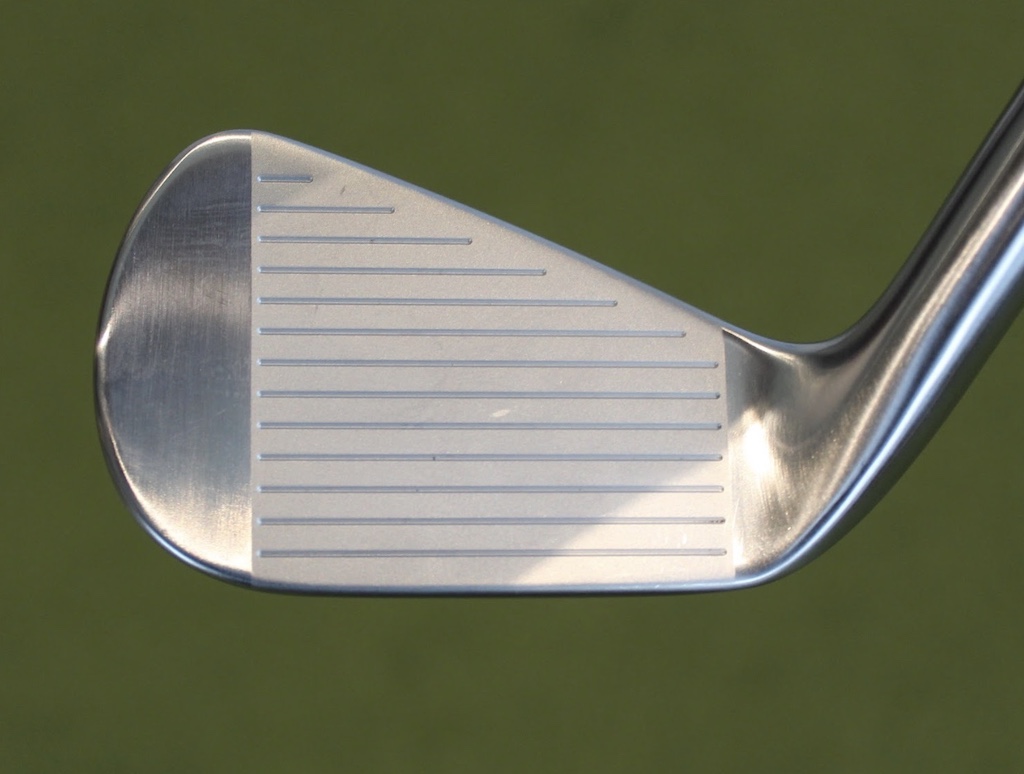
I ran across an article this past weekend from March of 2020, which identified the irons used by the top ten players in greens in regulation on the PGA Tour (at the time). What I have always found interesting and enlightening is that the best players in the world overwhelmingly choose to play mostly traditional forged blade irons, while it is estimated less than two percent of recreational players choose them.
So, do these elite players choose blades because they are the best players in the world—or could it possibly be that they are the best players partly because they choose blade irons? I believe it is both. Playing blades somewhat “guides” you to more precise ball-striking because of the improved feedback–you can feel the slightest of mis-hits so you always know how you’re doing. But, blade irons also allow you to shape shots and be more precise in your distance control–in other words, they allow you to optimize your skills because of their design.
I’ve long believed that many more players could benefit from blades than are willing to play them–especially in the higher lofts. I’ll qualify that statement by sharing that I’ve seen robotic testing prove that the higher the loft of the club, the less perimeter weighting or a cavity back design will improve ball flight performance and forgiveness. In fact, the nod to trajectory consistency and distance control may well go to the blade design in the higher lofts.
While technology has allowed all iron designs to be better today than ever before, perimeter weighting in irons allows many more visual variations than are possible with a traditional one-piece forged design. Take a look at today’s offerings from major brands in the blade category and you’ll see striking similarities to blades from past decades. But in the “game improvement” categories, you’ll see a vast variety of cosmetic looks, though many of those design intricacies are no more than that and don’t affect performance all that much. This is a competitive industry and the big brands need to be able to repeatedly deliver something that looks different from the previous model so they can claim to have created something better.
But let me get back to the notion that blade-style irons can be “defended” for many more golfers than the number that choose to game that kind of design.
As a club designer, I’ve long admitted that there is only so much I can do for you by the way a club is designed. For example, I cannot help the shot hit fat. Or the one that is thinned/bladed. I can’t correct an over-the-top move through impact, a shut-down face angle or a face delivered to the ball laid wide open. I cannot affect your swing path nor your thought processes before you even hit the shot.
No, as a club designer, I cannot help anything but the quality of impact if, and only if, the ball is contacted somewhere reasonably close to the desired impact area of the face, and the face is delivered pretty square to the intended line.
Understand that with any golf club, there is only one true “sweet spot”–the exact pinpoint where the transfer of clubhead speed to ball speed is optimized. And, with any club, impact efficiency or “smash factor” begins to be compromised as impact moves away from that tiny pinpoint location. What perimeter weighting aspires to do is to mitigate that energy loss. While there is no question that a half-inch miss with a cavity-back 7-iron will likely go longer than the same miss with a forged blade 7-iron, the actual difference is smaller than you might believe.
I will share that the difference between that miss with those two different styles of irons is increasingly larger as the loft decreases. In other words, the difference you’ll experience with a quarter-inch miss with a 40-degree 9-iron is less than you will see with a 30-degree 6- or 7-iron. But there is another anomaly of your actual misses of which you should be aware.
For most golfers I’ve measured, misses with longer irons tend to range more from heel to toe, and with shorter irons those misses tend to range from low to high in the face. Because of the more consistent blade thickness from top to bottom, true blade-style short irons quite often deliver more consistent distance and ball flight than their perimeter-weighted counterparts, both with real golfers and on robotic testing.
Having written weekly posts as The Wedge Guy for nearly 20 years, I have addressed this subject numerous times, and again offer the following challenge to conduct your own experiments. Talk to one of your golf professionals or a buddy who plays pretty traditional forged blade irons and ask to borrow their 8, 9 and PW for a few rounds. Even though the shafts might be stiffer and heavier than you are used to playing, I think you will still be surprised at how good your shotmaking consistency is with those, as opposed to the cavity back irons that you’ve been gaming.
I’ll close today’s post by also asking a question you probably haven’t pondered at all: If you think you are not “good enough” to play a traditional forged blade iron favored by the world’s best players, why would you think you can meet your expectations with the same wedges they play? Robotic testing has continually proven to me that even modern “tour design” wedges are much less forgiving of mis-hits than the most traditional forged blade 9-iron or pitching wedge.
In my 40 years in this industry, it is one of those things that make me go “hmm…”
- LIKE336
- LEGIT54
- WOW14
- LOL7
- IDHT3
- FLOP5
- OB1
- SHANK15
Instruction
The Wedge Guy: The easiest-to-learn golf basic

My golf learning began with this simple fact – if you don’t have a fundamentally sound hold on the golf club, it is practically impossible for your body to execute a fundamentally sound golf swing. I’m still a big believer that the golf swing is much easier to execute if you begin with the proper hold on the club.
As you might imagine, I come into contact with hundreds of golfers of all skill levels. And it is very rare to see a good player with a bad hold on the golf club. There are some exceptions, for sure, but they are very few and very far between, and they typically have beat so many balls with their poor grip that they’ve found a way to work around it.
The reality of biophysics is that the body moves only in certain ways – and the particulars of the way you hold the golf club can totally prevent a sound swing motion that allows the club to release properly through the impact zone. The wonderful thing is that anyone can learn how to put a fundamentally sound hold on the golf club, and you can practice it anywhere your hands are not otherwise engaged, like watching TV or just sitting and relaxing.
Whether you prefer an overlap, interlock or full-finger (not baseball!) grip on the club, the same fundamentals apply. Here are the major grip faults I see most often, in the order of the frequency:
Mis-aligned hands
By this I mean that the palms of the two hands are not parallel to each other. Too many golfers have a weak left hand and strong right, or vice versa. The easiest way to learn how to hold the club with your palms aligned properly is to grip a plain wooden ruler or yardstick. It forces the hands to align properly and shows you how that feels. If you grip and re-grip a yardstick several times, then grip a club, you’ll see that the learning curve is almost immediate.
The position of the grip in the upper/left hand
I also observe many golfers who have the butt of the grip too far into the heel pad of the upper hand (the left hand for right-handed players). It’s amazing how much easier it is to release the club through the ball if even 1/4-1/2″ of the butt is beyond the left heel pad. Try this yourself to see what I mean. Swing the club freely with just your left hand and notice the difference in its release from when you hold it at the end of the grip, versus gripping down even a half inch.
To help you really understand how this works, go to the range and hit shots with your five-iron gripped down a full inch to make the club the same length as your seven-iron. You will probably see an amazing shot shape difference, and likely not see as much distance loss as you would expect.
Too much lower (right) hand on the club
It seems like almost all golfers of 8-10 handicap or higher have the club too far into the palm of the lower hand, because that feels “good” if you are trying to control the path of the clubhead to the ball. But the golf swing is not an effort to hit at the ball – it is a swing of the club. The proper hold on the club has the grip underneath the pad at the base of the fingers. This will likely feel “weak” to you — like you cannot control the club like that. EXACTLY. You should not be trying to control the club with your lower/master hand.
Gripping too tightly
Nearly all golfers hold the club too tightly, which tenses up the forearms and prevents a proper release of the club through impact. In order for the club to move back and through properly, you must feel that the club is controlled by the last three fingers of the upper hand, and the middle two fingers of the lower hand. If you engage your thumbs and forefingers in “holding” the club, the result will almost always be a grip that is too tight. Try this for yourself. Hold the club in your upper hand only, and squeeze firmly with just the last three fingers, with the forefinger and thumb off the club entirely. You have good control, but your forearms are not tense. Then begin to squeeze down with your thumb and forefinger and observe the tensing of the entire forearm. This is the way we are made, so the key to preventing tenseness in the arms is to hold the club very lightly with the “pinchers” — the thumbs and forefingers.
So, those are what I believe are the four fundamentals of a good grip. Anyone can learn them in their home or office very quickly. There is no easier way to improve your ball striking consistency and add distance than giving more attention to the way you hold the golf club.
More from the Wedge Guy
- The Wedge Guy: Golf mastery begins with your wedge game
- The Wedge Guy: Why golf is 20 times harder than brain surgery
- The Wedge Guy: Musings on the golf ball rollback
- LIKE8
- LEGIT1
- WOW0
- LOL0
- IDHT0
- FLOP1
- OB0
- SHANK1
19th Hole
Vincenzi’s 2024 Texas Children’s Houston Open betting preview

As the Florida swing comes to an end, the PGA Tour makes its way to Houston to play the Texas Children’s Houston Open at Memorial Park Golf Course.
This will be the fourth year that Memorial Park Golf Course will serve as the tournament host. The event did not take place in 2023, but the course hosted the event in 2020, 2021 and 2022.
Memorial Park is a par-70 layout measuring 7,432 yards and features Bermudagrass greens. Historically, the main defense for the course has been thick rough along the fairways and tightly mown runoff areas around the greens. Memorial Park has a unique setup that features three Par 5’s and five Par 3’s.
The field will consist of 132 players, with the top 65 and ties making the cut. There are some big names making the trip to Houston, including Scottie Scheffler, Wyndham Clark, Tony Finau, Will Zalatoris and Sahith Theegala.
Past Winners at Memorial Park
- 2022: Tony Finau (-16)
- 2021: Jason Kokrak (-10)
- 2020: Carlos Ortiz (-13)
In this article and going forward, I’ll be using the Rabbit Hole by Betsperts Golf data engine to develop my custom model. If you want to build your own model or check out all of the detailed stats, you can sign up using promo code: MATTVIN for 25% off any subscription package (yearly is best value).
Key Stats For Memorial Park
Let’s take a look at several metrics for Memorial Park to determine which golfers boast top marks in each category over their last 24 rounds:
Strokes Gained: Approach
Memorial Park is a pretty tough golf course. Golfers are penalized for missing greens and face some difficult up and downs to save par. Approach will be key.
Total Strokes Gained: Approach per round in past 24 rounds:
- Tom Hoge (+1.30)
- Scottie Scheffler (+1.26)
- Keith Mitchell (+0.97)
- Tony Finau (+0.92)
- Jake Knapp (+0.84)
Strokes Gained: Off the Tee
Memorial Park is a long golf course with rough that can be penal. Therefore, a combination of distance and accuracy is the best metric.
Total Strokes Gained: Off the Tee per round in past 24 rounds:
- Scottie Scheffler (+0.94)
- Kevin Dougherty (+0.93)
- Cameron Champ (+0.86)
- Rafael Campos (+0.84)
- Si Woo Kim (+0.70)
Strokes Gained Putting: Bermudagrass + Fast
The Bermudagrass greens played fairly fast the past few years in Houston. Jason Kokrak gained 8.7 strokes putting on his way to victory in 2021 and Tony Finau gained in 7.8 in 2022.
Total Strokes Gained Putting (Bermudagrass) per round past 24 rounds (min. 8 rounds):
- Adam Svensson (+1.27)
- Harry Hall (+1.01)
- Martin Trainer (+0.94)
- Taylor Montgomery (+0.88)
- S.H. Kim (+0.86)
Strokes Gained: Around the Green
With firm and undulating putting surfaces, holding the green on approach shots may prove to be a challenge. Memorial Park has many tightly mowed runoff areas, so golfers will have challenging up-and-down’s around the greens. Carlos Ortiz gained 5.7 strokes around the green on the way to victory in 2020.
Total Strokes Gained: Around the Green per round in past 24 rounds:
- Mackenzie Hughes (+0.76)
- S.H. Kim (+0.68)
- Scottie Scheffler (+0.64)
- Jorge Campillo (+0.62)
- Jason Day (+0.60)
Strokes Gained: Long and Difficult
Memorial Park is a long and difficult golf course. This statistic will incorporate players who’ve had success on these types of tracks in the past.
Total Strokes Gained: Long and Difficult in past 24 rounds:
- Scottie Scheffler (+2.45)
- Ben Griffin (+1.75)
- Will Zalatoris (+1.73)
- Ben Taylor (+1.53)
- Tony Finau (+1.42)
Course History
Here are the players who have performed the most consistently at Memorial Park.
Strokes Gained Total at Memorial Park past 12 rounds:
- Tyson Alexander (+3.65)
- Ben Taylor (+3.40)
- Tony Finau (+2.37)
- Joel Dahmen (+2.25)
- Patton Kizzire (+2.16)
Statistical Model
Below, I’ve reported overall model rankings using a combination of the five key statistical categories previously discussed.
These rankings are comprised of SG: App (24%) SG: OTT (24%); SG: Putting Bermudagrass/Fast (13%); SG: Long and Difficult (13%); SG: ARG (13%) and Course History (13%)
- Scottie Scheffler
- Wyndham Clark
- Tony Finau
- Joel Dahmen
- Stephan Jaeger
- Aaron Rai
- Sahith Theegala
- Keith Mitchell
- Jhonnatan Vegas
- Jason Day
- Kurt Kitayama
- Alex Noren
- Will Zalatoris
- Si Woo Kim
- Adam Long
2024 Texas Children’s Houston Open Picks
Will Zalatoris +2000 (Caesars)
Scottie Scheffler will undoubtedly be difficult to beat this week, so I’m starting my card with someone who I believe has the talent to beat him if he doesn’t have his best stuff.
Will Zalatoris missed the cut at the PLAYERS, but still managed to gain strokes on approach while doing so. In an unpredictable event with extreme variance, I don’t believe it would be wise to discount Zalatoris based on that performance. Prior to The PLAYERS, the 27-year-old finished T13, T2 and T4 in his previous three starts.
Zalatoris plays his best golf on long and difficult golf courses. In his past 24 rounds, he ranks 3rd in the category, but the eye test also tells a similar story. He’s contended at major championships and elevated events in the best of fields with tough scoring conditions. The Texas resident should be a perfect fit at Memorial Park Golf Club.
Alex Noren +4500 (FanDuel)
Alex Noren has been quietly playing some of his best golf of the last half decade this season. The 41-year-old is coming off back-to-back top-20 finishes in Florida including a T9 at The PLAYERS in his most recent start.
In his past 24 rounds, Noren ranks 21st in the field in Strokes Gained: Off the Tee, 30th in Strokes Gained: Around the Green, 25th in Strokes Gained: Total on long and difficult courses and 21st in Strokes Gained: Putting on fast Bermudagrass greens.
In addition to his strong recent play, the Swede also has played well at Memorial Park. In 2022, Noren finished T4 at the event, gaining 2.2 strokes off the tee and 7.0 strokes on approach for the week. In his two starts at the course, he’s gained an average of .6 strokes per round on the field, indicating he is comfortable on these greens.
Noren has been due for a win for what feels like an eternity, but Memorial Park may be the course that suits him well enough for him to finally get his elusive first PGA Tour victory.
Mackenzie Hughes +8000 (FanDuel)
Mackenzie Hughes found himself deep into contention at last week’s Valspar Championship before faltering late and finishing in a tie for 3rd place. While he would have loved to win the event, it’s hard to see the performance as anything other than an overwhelming positive sign for the Canadian.
Hughes has played great golf at Memorial Park in the past. He finished T7 in 2020, T29 in 2021 and T16 in 2022. The course fit seems to be quite strong for Hughes. He’s added distance off the tee in the past year or and ranks 8th in the field for apex height, which will be a key factor when hitting into Memorial Park’s elevated greens with steep run-off areas.
In his past 24 rounds, Hughes is the best player in the field in Strokes Gained: Around the Greens. The ability to scramble at this course will be extremely important. I believe Hughes can build off of his strong finish last week and contend once again to cement himself as a President’s Cup consideration.
Akshay Bhatia +8000 (FanDuel)
Akshay Bhatia played well last week at the Valspar and seemed to be in total control of his golf ball. He finished in a tie for 17th and shot an impressive -3 on a difficult Sunday. After struggling Thursday, Akshay shot 68-70-68 in his next three rounds.
Thus far, Bhatia has played better at easier courses, but his success at Copperhead may be due to his game maturing. The 22-year-old has enormous potential and the raw talent to be one of the best players in the world when he figures it all out.
Bhatia is a high upside play with superstar qualities and may just take the leap forward to the next stage of his career in the coming months.
Cameron Champ +12000 (FanDuel)
Cameron Champ is a player I often target in the outright betting market due to his “boom-or-bust” nature. It’s hard to think of a player in recent history with three PGA Tour wins who’s been as inconsistent as Champ has over the course of his career.
Despite the erratic play, Cam Champ simply knows how to win. He’s won in 2018, 2019 and 2021, so I feel he’s due for a win at some point this season. The former Texas A&M product should be comfortable in Texas and last week he showed us that his game is in a pretty decent spot.
Over his past 24 rounds, Champ ranks 3rd in Strokes Gained: Off the Tee and 30th in Strokes Gained: Total on long and difficult courses. Given his ability to spike at any given time, Memorial Park is a good golf course to target Champ on at triple digit odds.
Robert MacIntyre +12000 (FanDuel)
The challenge this week is finding players who can possibly beat Scottie Scheffler while also not dumping an enormous amount of money into an event that has a player at the top that looks extremely dangerous. Enter McIntyre, who’s another boom-or-bust type player who has the ceiling to compete with anyone when his game is clicking on all cylinders.
In his past 24 rounds, MacIntyre ranks 16th in the field in Strokes Gained: Off the Tee, 17th in Strokes Gained: Around the Green and 10th in Strokes Gained: Total on long and difficult courses.
MacIntyre’s PGA Tour season has gotten off to a slow start, but he finished T6 in Mexico, which is a course where players will hit driver on the majority of their tee shots, which is what we will see at Memorial Park. Texas can also get quite windy, which should suit MacIntyre. Last July, the Scot went toe to toe with Rory McIlroy at the Scottish Open before a narrow defeat. It would take a similar heroic effort to compete with Scheffler this year in Houston.
Ryan Moore +15000 (FanDuel)
Ryan Moore’s iron play has been absolutely unconscious over his past few starts. At The PLAYERS Championship in a loaded field, he gained 6.1 strokes on approach and last week at Copperhead, he gained 9.0 strokes on approach.
It’s been a rough handful of years on Tour for the 41-year-old, but he is still a five-time winner on the PGA Tour who’s young enough for a career resurgence. Moore has chronic deterioration in a costovertebral joint that connects the rib to the spine, but has been getting more consistent of late, which is hopefully a sign that he is getting healthy.
Veterans have been contending in 2024 and I believe taking a flier on a proven Tour play who’s shown signs of life is a wise move at Memorial Park.
- LIKE13
- LEGIT1
- WOW1
- LOL0
- IDHT0
- FLOP0
- OB0
- SHANK1
Opinion & Analysis
Ryan: Why the race to get better at golf might be doing more harm than good

B.F. Skinner was one of the most important psychologists of the 20th century, developing the foundation of the development of reinforcement, and in doing so, creating the concept of behaviorism. In simple terms, this means that we are conditioned by our habits. In practical terms, it explains the divide between the few and far between elite instructors and college coaches.
To understand the application, let’s quickly review one of B.F. Skinner’s most important experiments; superstitions in the formation of behavior by pigeons. In this experiment, food was dispensed to pigeons at random intervals. Soon, according to Skinner, the pigeons began to associate whatever action they were doing at the time of the food being dispensed. According to Skinner, this conditioned that response and soon, they simply haphazardly repeated the action, failing to distinguish between cause and correlation (and in the meantime, looking really funny!).
Now, this is simply the best way to describe the actions of most every women’s college golf coach and too many instructors in America. They see something work, get positive feedback and then become conditioned to give the feedback, more and more, regardless of if it works (this is also why tips from your buddies never work!).
Go to a college event, particularly a women’s one, and you will see coaches running all over the place. Like the pigeons in the experiment, they have been conditioned into a codependent relationship with their players in which they believe their words and actions, can transform a round of golf. It is simply hilarious while being equally perturbing
In junior golf, it’s everywhere. Junior golf academies make a living selling parents that a hysterical coach and over-coaching are essential ingredients in your child’s success.
Let’s be clear, no one of any intellect has any real interest in golf — because it’s not that interesting. The people left, including most coaches and instructors, carve out a small fiefdom, usually on the corner of the range, where they use the illusion of competency to pray on people. In simple terms, they baffle people with the bullshit of pseudo-science that they can make you better, after just one more lesson.
The reality is that life is an impromptu game. The world of golf, business, and school have a message that the goal is being right. This, of course, is bad advice, being right in your own mind is easy, trying to push your ideas on others is hard. As a result, it is not surprising that the divorce rate among golf professionals and their instructors is 100 percent. The transfer rate among college players continues to soar, and too many courses have a guy peddling nefarious science to good people. In fact, we do at my course!
The question is, what impact does all this have on college-age and younger kids? At this point, we honestly don’t know. However, I am going to go out on a limb and say it isn’t good.
Soren Kierkegaard once quipped “I saw it for what it is, and I laughed.” The actions of most coaches and instructors in America are laughable. The problem is that I am not laughing because they are doing damage to kids, as well as driving good people away from this game.
The fact is that golfers don’t need more tips, secrets, or lessons. They need to be presented with a better understanding of the key elements of golf. With this understanding, they can then start to frame which information makes sense and what doesn’t. This will emancipate them and allow them to take charge of their own development.
- LIKE14
- LEGIT4
- WOW1
- LOL2
- IDHT0
- FLOP1
- OB0
- SHANK11
-

 19th Hole4 days ago
19th Hole4 days agoJohn Daly stuns fans into silence with brutal opening tee shot on PGA Tour Champions
-

 19th Hole1 week ago
19th Hole1 week ago2-time major champ announces shock retirement from the sport at age of 33
-

 19th Hole1 week ago
19th Hole1 week agoEdoardo Molinari reveals the latest PGA Tour golfer to turn down ‘good offer’ from LIV Golf
-

 19th Hole2 weeks ago
19th Hole2 weeks agoScottie Scheffler had an interesting response when asked how he ‘quiets the noise’ following Players victory
-

 Equipment2 weeks ago
Equipment2 weeks agoBest driver 2024: The best driver for you, as recommend by expert club fitters
-

 19th Hole1 week ago
19th Hole1 week agoJon Rahm dealt fresh blow to hopes of qualifying for 2025 Ryder Cup
-

 19th Hole4 days ago
19th Hole4 days agoCharlie Woods finds it tough going on American Junior Golf Association debut
-
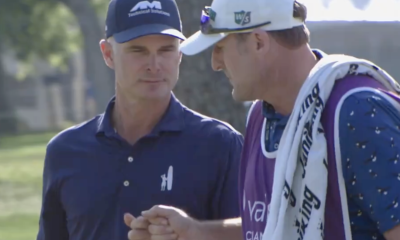
 19th Hole1 week ago
19th Hole1 week agoWhy Kevin Streelman sought USGA approval to use this equipment tool as he leads Valspar after round one





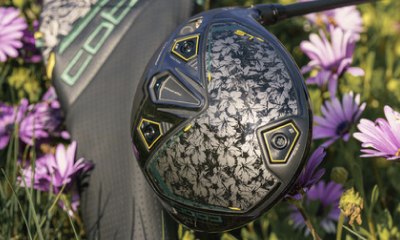



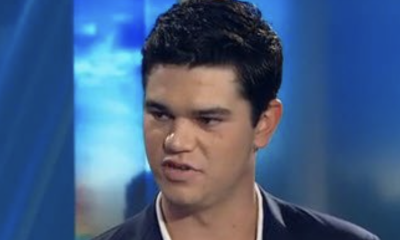

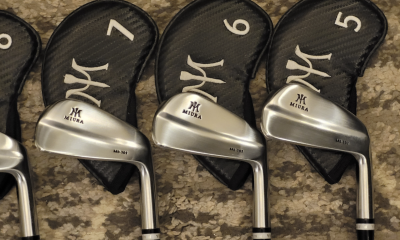

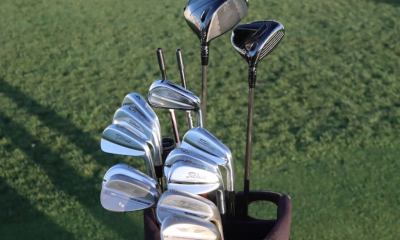











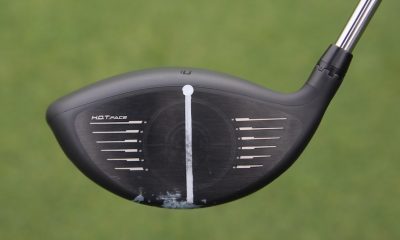

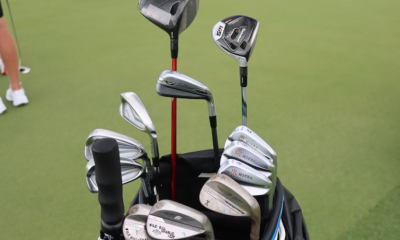

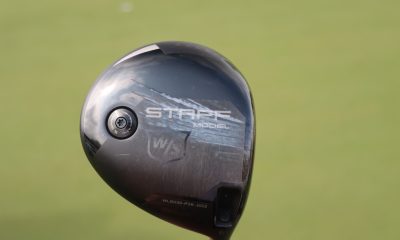

Donn Rutkoff
Mar 10, 2021 at 7:50 pm
Ain’t nothing in the world like Mizuno GFF wedges. I’m a hi handicap, now 66 yrs old, but I rarely miss hitting the green with a 52 degree killer Mizuno.
Now here’s a question. I got fitted for 8-9-W. Looking to replace Nike Vapor Fly irons up top. Very nice irons but I wanted more precision, narrower sole. I hoped the fitter would put me into Mizunos but he said I did best with Ping I 500. So I got ’em and I like them a lot. They have a forged face. Question is how much of the overall club is forged and do any of y’all think they give the same feedback as a 100% forged Mizuno? I also have an old Mizuno Fli-hi GFF 24 degree hybrid, nice feel, and went to add an 18 deg. But no GFF. I got a new Mizuno MMC 18. Feels very similar to the GFF 24 deg. Comments???
Sean Foster-Nolan
Feb 19, 2021 at 9:20 am
I always thought the concept was a bit overrated, and the “mystique” surrounding blades a bit overblown.
MJD
Feb 19, 2021 at 9:01 am
The feel, feedback and flight of a decent bladed iron vs a cavity iron is like comparing The Beatles to Milli Vanilli!
Once you play bladed irons you NEVER go back for reasons of forgiveness or playbility. As Terry says, a bad swing will end up with a bad shot; doesn’t matter what you play…just embrace it.
Delbert
Feb 18, 2021 at 4:11 pm
The PGA and LPGA tours should go to a standard club and ball spec like major league baseball. Then we would see who has the game. Interesting that we don’t see Vokey introducing a cavity back wedge. Great article.
Ron Snyder
Feb 18, 2021 at 11:53 am
Years ago a monthly golf mag published an article on the results of they acquired after observing several strikes with a cavity back and a blade iron. Using Iron Byron set up to repeat strikes high toe, low heel and point of percussion. The blade was more accurate (20-30%) on heel toe strikes! CG strikes were equal as expected. I don’t remember the loft used but either 5 or 7 iron. Of the robot offered no feedback but had it been a cool autumn day it would have said ouch on those toe hits. Producing positive accurate feedback which is what thousands of golf facilitators look for. Now that pros are hitting thousand mile 8 irons(yipper I’m jealous) and their 8 irons are like my old Wilson staff 5 iron, there iirons are more consistent. Seems to me, merely observed, that most consistent winners are blade players. Feedback is so important for players, golfers not so much. Looks good feels good so must be good for golfers is a necessity. Here’s to blades and I like the fact that designers are bringing back the design of the Sting blades of long ago (tungsten can work wonders put in the right place)
Thx for the great articles
Bob Pegram
Feb 18, 2021 at 4:18 am
Terry’s explanation makes sense. I have RAZR X Forged irons (2011) which are cavity back one piece forged. The long and middle irons are very easy to hit and get up in the air, but I have to make sure I hit the short irons low on the face or they come up short. Now I understand why.
Kourt
Feb 18, 2021 at 12:17 am
Correction, a lot of the best male players in the world choose blade irons, but not all. But most of the LPGA players choose cavity irons. I’d argue that most amateur golfers resemble the swing speed of an lpga player not a pga player. An interesting question is why do most of the lpga choose to not play blades?
Lefthack
Feb 17, 2021 at 6:53 pm
My combo irons are blades from 8 to PW. I could likely play a full set, but my game wouldn’t be as pretty and I would have to work harder.
I would love to rock a set of Nike VR Pro blades, those look awesome.
delbert
Feb 18, 2021 at 4:08 pm
I picked up a used set of VRII Pro blades a few years ago for $129. They were barely used and very easy to hit. The combo sets are great, too.
Theoxii
Feb 17, 2021 at 6:34 pm
I am a recovering club junkie. I have 6 sets ranging from exotics game improvement, TM 790s, maxfli A10 combos to Reid Lockhart blades. Not a whole lot of difference in scoring average. I’ve shot at least 78 with each set; I’ve also been on the wrong side of 90 with each. I found that your course management adjusts to your capability with the set ie choking up on a fairway or hybrid rather than a full 3/4/5 blade. From 7i up- 165yds in I dont have a problem with blades.
Terry Koehler
Feb 17, 2021 at 10:54 pm
I gamed the Reid Lockhart RL Blades for 20 years, until I designed the Ben Hogan FT. Worth 15s, which I have had in the bag since the first prototype set in 2014. That said, I always thought the RL blades were close to the ultimate blade — precision + forgiveness of the toe miss, which is the most penalizing on blades.
Have to admit I’ve been toying with a reprise of that RL Blade with some updating . . . Hmmmmmm, maybe there is an “ultimate” blade in Edison’s future . . . .
G
Feb 18, 2021 at 4:49 am
Hi Terry,
The RL blades are a great looking iron.
I used them for years and would be more than willing to try a newer version of them.
Looks like you’ve got something to do in 2021?
Frank Walley
Feb 20, 2021 at 4:51 pm
I’d love to see the Edison update to the RL.
SV677
Feb 17, 2021 at 4:13 pm
I started with blades because that was all that was available. I have a blade to practice with and find that after just a few swings I find the sweet spot more consistently. I would think ideally a split set might be the answer. The problem would be synching lofts. With today’s stronger lofts at around a 6 or 7 iron you would end up with two of the “same” clubs to keep consistent gapping.
MarkM
Feb 17, 2021 at 4:07 pm
Terry, you have a very good way of frequently hitting the nail on the head. I’ve always thought “forgiveness” in irons was overrated and agree with your stance. I still want a 460 driver though so I can bash it as hard as possible and still find the course though.
I’ve always preferred the look of a blade at address. Like Mr. Walsh, it’s probably because I grew up playing them. At different times in my golfing life I’ve gone to “more forgiving” irons and eventually made my way back to blades.
I’m at that crossroads again. After playing a variety of cavity backs over the past 9 years I am back to playing a blade – the Honma Rose-Proto MBs, superb! This was after I experimented with a set of Hogan Grind blades after club season was over. In 3 months the ball striking improved enough with my irons to make my playing partners wonder if they were legal or not when I kept taking their money 🙂 As other say, to each his own but I’m pretty sure I’ll be playing blades for as long as I can get the ball in the air.
Current hcp 7.0
Robert Healey
Feb 17, 2021 at 2:41 pm
In an industry obsessing about COR,MOI and performance data lets not forget the most important metric of all, enjoyment.! Play what you like the look of, sound and feel of. For 99% or recreational gofers it doesn’t really matter if its a blade, game improvement or a combination.
Go and enjoy whatever kit you have chosen.
B_of_H
Feb 17, 2021 at 12:43 pm
Thank you. I have always thought that from 7 iron down blades are actually more accurate for me as I tend to miss a little high in the face at times and perhaps a bit on the heel. i’ve done a bunch of 7 iron fittings and blades had the most consistent distance and tightest dispersion each time.
Michael Welsh
Feb 17, 2021 at 12:35 pm
I have found that my scores with blade irons are the same or better as cavity backs. Could be because I learned to play with blades nearly 60 years ago because that was my only option. Could be that they just plain look better to my eye because of that old historical tie. Or it could be because I get sloppy with a cavity back relying on that supposed forgiveness. So at this point I simply select a blade because it makes me happy. It makes me think about all the things I need to do to hit a pure shot, and when I don’t I only blame myself. Handicap 9.
Bob Jones
Feb 19, 2021 at 12:40 pm
I was going to write a response, but I don’t have to. You just wrote it for me. Every word, and I mean EVERY WORD, is my story, too.
EDWARD JOHNSON
Feb 19, 2021 at 4:55 pm
Exactly!